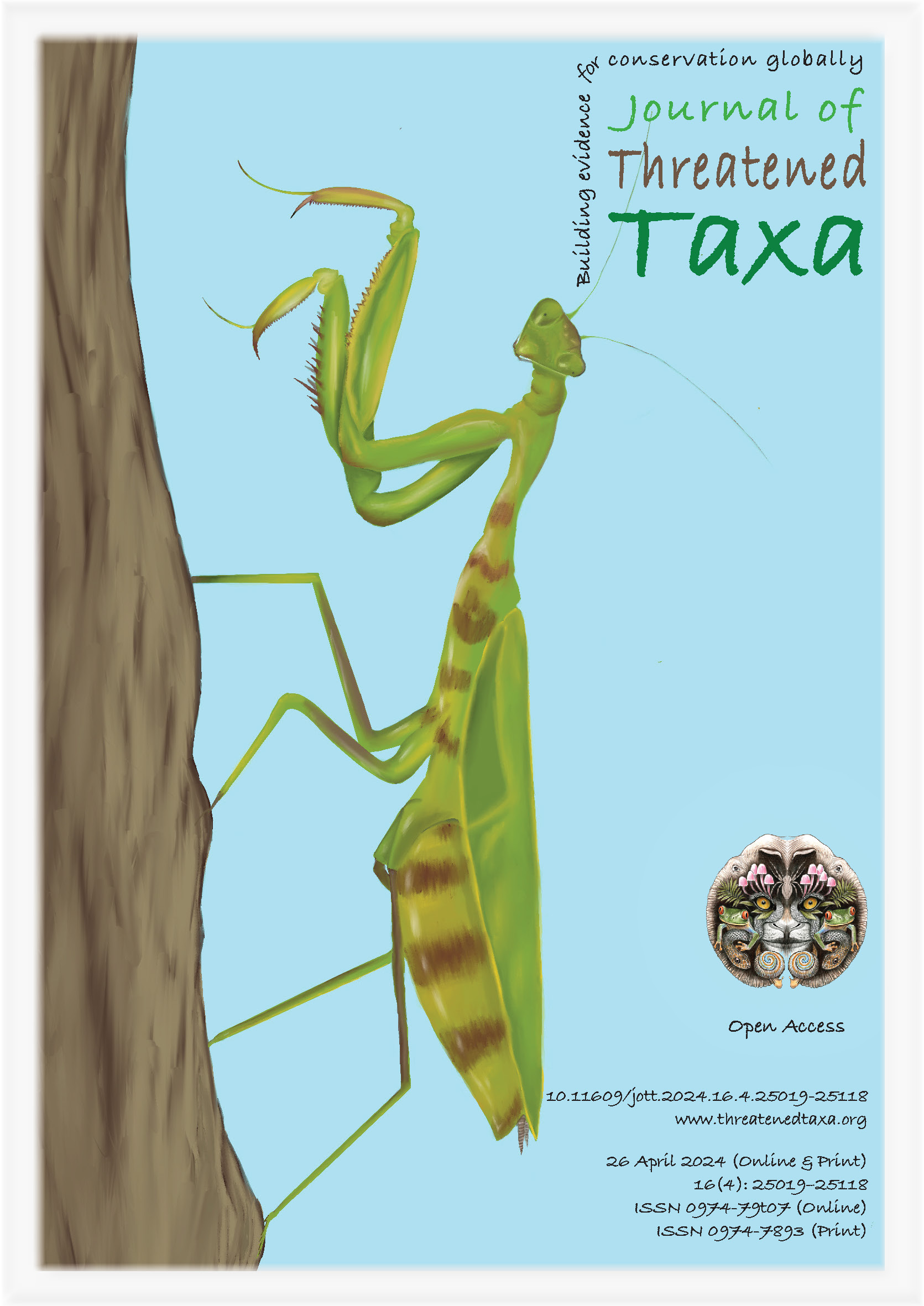New distribution record of Alstonia sebusii (Van Heurck & Müll. Arg.) Monach. from Manipur, India
Main Article Content
Abstract
The genus Alstonia belonging to the Apocyanaceae family is represented by 44 species distributed worldwide. In India, the taxon is represented by eight species, reported from Andaman & Nicobar Islands, Western Ghats, Eastern Ghats, western Himalaya, and northeastern regions. The present study reported the occurrence of Alstonia sebusii from Pudunamei village, Mao, a new addition to the flora of Manipur. Detailed morphological descriptions and measurements were recorded based on living plant specimens. The plant is locally called ‘Topfiira Koso Pro’ having ethno-medicinal properties and widely been used by local people of the state to treat various ailments. The plant is rare and found to occur at specific location at Pudunamei village.
Article Details

This work is licensed under a Creative Commons Attribution 4.0 International License.
Authors own the copyright to the articles published in JoTT. This is indicated explicitly in each publication. The authors grant permission to the publisher Wildlife Information Liaison Development (WILD) Society to publish the article in the Journal of Threatened Taxa. The authors recognize WILD as the original publisher, and to sell hard copies of the Journal and article to any buyer. JoTT is registered under the Creative Commons Attribution 4.0 International License (CC BY), which allows authors to retain copyright ownership. Under this license the authors allow anyone to download, cite, use the data, modify, reprint, copy and distribute provided the authors and source of publication are credited through appropriate citations (e.g., Son et al. (2016). Bats (Mammalia: Chiroptera) of the southeastern Truong Son Mountains, Quang Ngai Province, Vietnam. Journal of Threatened Taxa 8(7): 8953–8969. https://doi.org/10.11609/jott.2785.8.7.8953-8969). Users of the data do not require specific permission from the authors or the publisher.
References
Brown, R. (1810). On the Asclepiadeae, a natural order of plants separated from the Apocineae of Jussieu. Memoires of the Wernerian Natural History Society 1: 12–78.
BSI (2023). Alstonia on https://efloraIndia.gov.in. Botanical Survey of India, Kolkata. Accessed on 23 January 2023.
Datta, A. & M.P. Nayar (2021). Apocyanaceae, pp. 22–36. In: Prasanna, P.V. (ed.). Fascicles of Flora of India, Fascicle 30. Botanical Survey of India, Kolkata, India, 324 pp.
Eshuo, K. (2023). Lycianthes lysimachioides (Wall.) Bitter (Solanaceae): A new addition to the flora of Manipur, Northeast India. Biological Forum – An International Journal 15(2): 342–345.
Eshuo, K. & S.K. Chaturvedi (2011). Ceropegia longifolia Wallich (Apocyanaceaae: Asclepiadoideae) – a new record for Manipur, India. Pleione 5(1): 201–204.
Eshuo, K. & A. Lokho (2023). Sauromatum horsfieldii (Araceae): a new addition to the flora of Manipur, northeastern India. Journal of Threatened Taxa 15(1): 22538–22542. https://doi.org/10.11609/jott.8024.15.1.22538-22542 DOI: https://doi.org/10.11609/jott.8024.15.1.22538-22542
Hooker, J.D. (1880–1882). The Flora of British India. Vol. 3. L. Reeve and Co., London, 643 pp.
Jain, S.K. & R.R. Rao (1976). A Handbook of Field and Herbarium Methods. Today & Tomorrow’s Printers and Publishers, New Delhi, India, 158 pp.
Kanjilal, P.C., A. Das & R.N. De (1939). Flora of Assam. Vol. 3. Government of Assam, Shillong, India, 254 pp.
Lokho, K. & D. Narasimhan (2013). Ethnobotany of Mao-Naga Tribe of Manipur, India. Pleione 7(2): 314–324.
Mao A.A. (1993). A preliminary report on the folklore Botany of Mao Nagas of Manipur (India). Ethnobotany 5(1&2): 143–147.
Mao, A.A. (1999). Some symbolic and superstitious botanical, folklore about Mao Naga tribe of Manipur (India). Journal of Economic and Taxonomic Botany 23(2): 625–628.
Mao, A.A. & R. Gogoi (2016). Flora of Dziiko/ Dzukou Valley. Botanical Survey of India, Kolkata, India, 283 pp.
Monachino, J. (1949). A revision of the genus Alstonia (Apocynaceae). Pacific Science 3(2): 133–182.
POWO (2023). Plants of the world Online. Facilitated by the Royal Botanic Gardens, Kew. Published on the internet. Accessed at http://www.plantsoftheworldonline.org/ on 5 October 2023.
Sidiyasa, K. (1998). Taxonomy, Phylogeny, and wood anatomy of Alstonia (Apocyanaceae). Blumea 11(Supplement): 1–230.
Singh, N.P., A.S. Chauhan & M.S. Mondal (2000). Flora of Manipur. Vol. I. Botanical Survey of India, Kolkata, India, 600 pp.
Soerianegara, I. & R.H.M.J. Lemmens (eds.) (1993). Plant Resources of South-East Asia (PROSEA) 5 (1). Timber trees: major commercial timbers. Pudoc Scientific Publishers, Wageningen, Indonesia, 610 pp.

